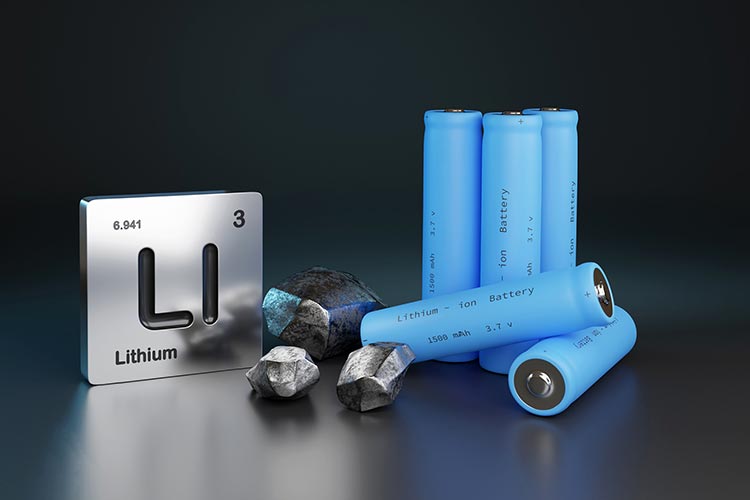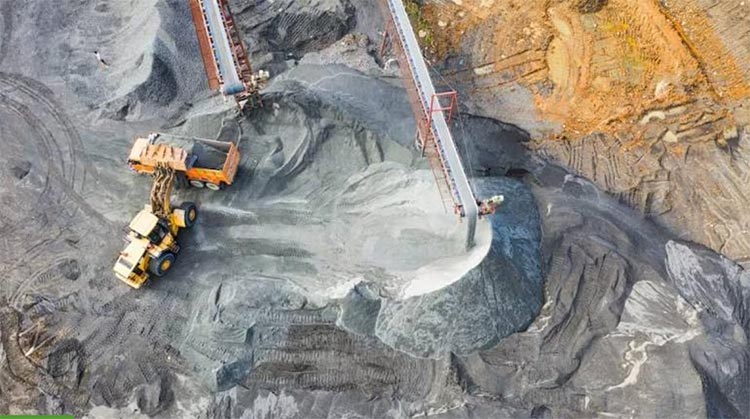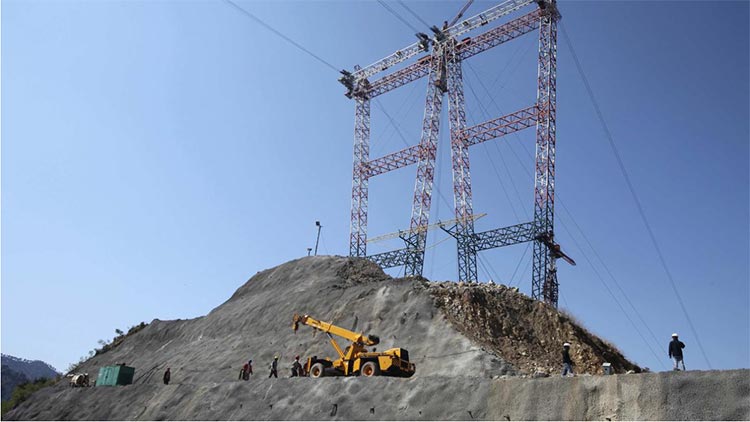
A month back, around 5.9 million tonnes of Lithium have been discovered in the state of Jammu and Kashmir for the first time, claimed by the union government. But, experts on the other hand stated that Lithium reserves were already discovered in the state back in 1999. Lithium, often known as the ‘White Gold’ is now a very important mineral as it is mostly utilized in the manufacturing process of batteries. And because of their higher density they are used in smartphones, electric vehicles, and other electronic devices. India now stands as the sixth biggest known reserves of Lithium resources in the globe. As per the official statement of the central government, out of thee 51 mineral blocks, 5 blocks pertains to gold and other blocks pertains to commodities like potash, molybdenum, base metals etc. spread across 11 states of Jammu & Kashmir (UT), Andhra Pradesh, Chhattisgarh, Gujarat, Jharkhand, Karnataka, Madhya Pradesh, Odisha, Rajasthan, Tamil Nadu and Telangana.
Now, India is undertaking various efforts to boost the growth of the electric vehicle industry and also trying to make it affordable for the people. Some experts and government officials believe that this massive discovery of Lithium will provide impetus to the manufacturing of EV battery cells. In order to uplift the growth of lithium-ion battery manufacturing, India requires Rs 33,750 crore of investment, reports Council on Energy, Environment and Water (CEEW). By the end of 2030, the country’s lithium battery production is anticipated to be around 70-100 GWh. According to automobile experts of the country, the discovery seems very optimistic for the future of the EV industry. In this regard, Sohinder Gill, Director General, SMEV and CEO at Hero Electric told CircuitDigest, "We applaud the government's efforts in finding an Indian lithium resource. It's a big step forward for the nation. Only a few nations now supply lithium for the production of batteries. Lithium accounts for ~15% of the battery's cost. The cost of batteries could drop by 5% if we can purchase lithium from the Indian reserve for a price that is 2/3rd of the cost of the imported material, making EVs more affordable. The EV sector will become "Atmanirbhar" and the control of Chinese firms over the raw material will be further diminished if we are able to obtain the lithium in sufficient quantities from Indian deposits."
Since lithium is a major component in batteries, its discovery in J&K will help India progress at a faster pace in the field of battery manufacturing for the automotive industry and consumer electronics. According to a Counterpoint Research survey, the global energy storage demand for just passenger EVs is expected to reach over 3.8TWh by 2030. Along with the demand from CVs and renewable energy storage like solar and wind, the total energy storage demand for 2030 will reach a much higher number. Although other battery chemistries are being developed, as of now lithium batteries are the most reliable for energy storage. China, Europe and the US all are racing to set up battery manufacturing plants. The recently discovered lithium deposits will help India strengthen its position in the global energy market.

India’s Current Lithium Mining Scenario and Possible Challenges
As of 2022, India was importing battery cells for battery pack assembly mostly from China. According to the Ministry of Commerce and Industries, India imported Rs 163 billion worth of lithium and lithium-ion between April and December 2022. In 2022, India cleared a budget of Rs 18,100 crore to set up 50GWh of ACC manufacturing capacity by 2030 under the PLI scheme. The ACC PLI is expected to boost India’s EV adoption and strengthen India’s position in the energy market as well. EV sales in India are expected to reach 65% of total vehicle sales or over 24.5 million units by 2030. In an exclusive interaction with CircuitDigest, Abhik Mukherjee, Research Analyst at Counterpoint told, "the discovery of lithium along with the 2023 budget announcement of reduced excise duty on machinery required for manufacturing lithium-ion batteries will help India achieve its EV and energy generation targets at a much lower cost. It will reduce import dependency, new battery manufacturing plants will be set up, the mining sector will experience a boom and new job creation will be witnessed.”
The Salal-Himalaya region where the deposit has been found is a geographically very delicate region. It is being feared that the earthquake-prone area will face ecological destruction if heavy mining activities are carried out. Moreover, lithium extraction is a water-intensive process. Nearly 2 million liters of water is required to extract just 1 tonne of lithium. This will put huge pressure on the region’s ecosystem. Experts are suggesting ways for sustainable mining, but the higher cost of sustainable mining will reduce revenue and profits. Currently, India does not possess the technology for lithium extraction. “As India allows 100% foreign investment in the mining sector, it is expected that foreign companies will be given the responsibility of lithium extraction initially, which is not favorable for the domestic mining sector. But from a long-term perspective, we expect India to benefit from the technology transfer. Alongside these hardships, the threats from radical groups operating in and around the J&K region are something that the government needs to neutralize before the mining begins,” added Abhik. The project has the potential to face a lot of heat from locals, climate activists and radical groups, and the government will have to work its way around these hardships for a greener future.
The Geological Survey of India (GSI) experts noted that it is the time to view and scrutinize how much of the discovered lithium is viable and feasible and can be commercially extracted. More examination will actually discover the volume of the total reserve. China on the other hand has already unleashed top-notch infrastructure and technological equipment and their years of experience of lithium mining extraction and refinery is an added advantage. India requires more government assistance, investment, and energy. Also, India lacks experience in refining lithium because it is associated with rocks and other minerals. The rocks need to be broken and wiping out certain chemicals with evaporation and also magnetic contamination with magnets. India has no experience in doing all these activities and moreover, there is no trusted technology, machineries and industries associated with this.
Speaking about the grave challenges of extracting Lithium in India, Senior Geologist and Earth Scientist Dr. Sreedhar Ramamurthy told CircuitDigest exclusively, "There is huge euphoria over the reported 5.9 Million Tonnes of "inferred" lithium ore near Salal in J&K based on the preliminary survey by GSI. GSI has earlier reported finds of Lithium in Karnataka, but this has attracted a lot of attention. The actual quantity of Lithium ore and extractable amount would be only known after detailed exploration is undertaken. Generally Lithium content is less than 2% of the ore. The technology to extract Lithium has to be sourced. Being in a fragile ecosystem of the Himalayas, it's also a major concern as to how mining would adversely affect the local environment. It's also worth noting that EVs could be some relief to the polluted urban environments but they fundamentally seem to be yet another 'false-solution' to the larger issue of climate justice."
Although the discovered Lithium is likely to uplift the growth of EVs in India, experts have clearly stated that if the resource is not mined scientifically then there could be serious environmental depletion and it could pose serious risks of soil degradation and air pollution. On the other hand, the waste disposal, refining, and open cast mining contaminates the groundwater largely thereby disturbing the biodiversity. The extraction from the ore is mostly water-intensive, around 2.2 million liters of water will be wasted for extracting one tonne of lithium. Additionally, mining in the Himalayan region has various societal impacts and could displace the local communities, explain experts. This particular region is home to a huge number of indigenous communities and the government could face fierce activism over this issue if mining begins.

Conclusion and Possible Solution
Back in May 2021, the central government announced a PLI scheme of Rs 18,100 crore for a term of five years to manufacture Advance Chemistry Cells (ACC) in the nation. In the same year in June, there were three bidders such as Reliance New Energy Limited who signed the agreement under the PLI scheme. Most importantly, as there are no possible alternatives, the country will have to carry on importing because there are deadlines for various ventures aimed at zero-carbon emissions coming near. Also, during the 26th United Nations Climate Change Conference of the Parties (COP26) in Glasgow in 2021, India assured to reduce emissions to net-zero by the end of 2070 and therefore, the discovery of lithium would be critical to meet the targets in the coming years.
According to a report by the International Energy Agency (IEA), there could be lithium shortages internationally towards the end of 2025 and by 2050 around 2 billion electric vehicles are required to meet the net-zero target. But, EV's sales reached only 6.6 million globally. The supply of lithium is facing hurdles not only from the augmenting demand, but the resources are concentrated in few places and most of its production is available in regions with vast water stress.
Speaking of the growth and possible solution, Rajoo Goel, Secretary General of industry body ELCINA said, “Discovery of Lithium reserves in J&K is a very significant and positive development for India. It is an invaluable resource and will strengthen and accelerate the development of EV's and renewable energy capacity in India. It will enhance energy storage capacity and reduce use of fossil fuels. The key to success of course lies in successfully mining and processing Lithium for industrial use. Lithium ion batteries are a key component for energizing electronic equipment and transportation systems. We however, need to ensure safe use and recycling of Lithium based products to protect the environment.”





